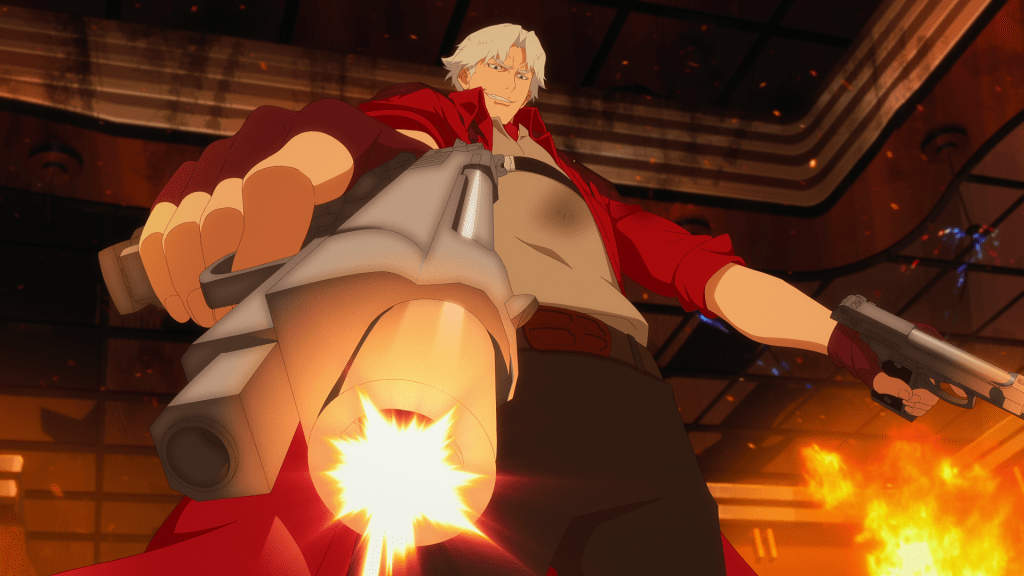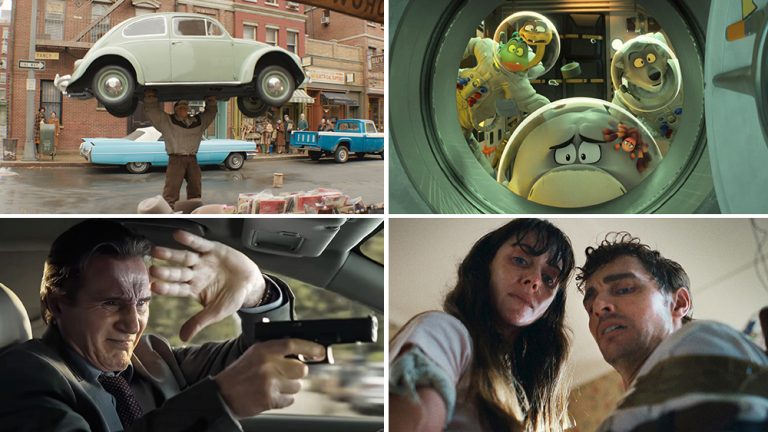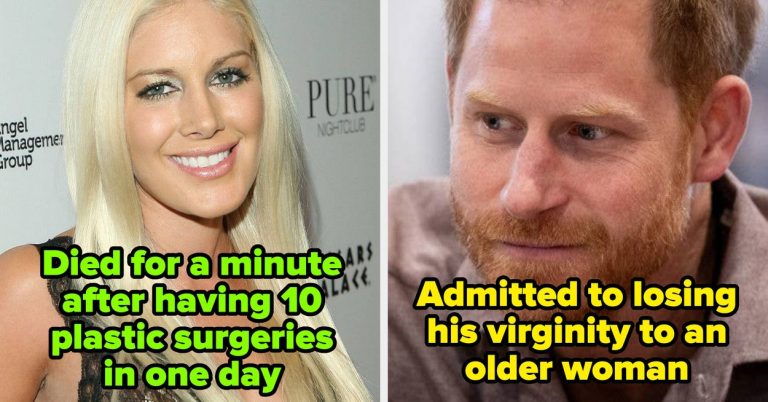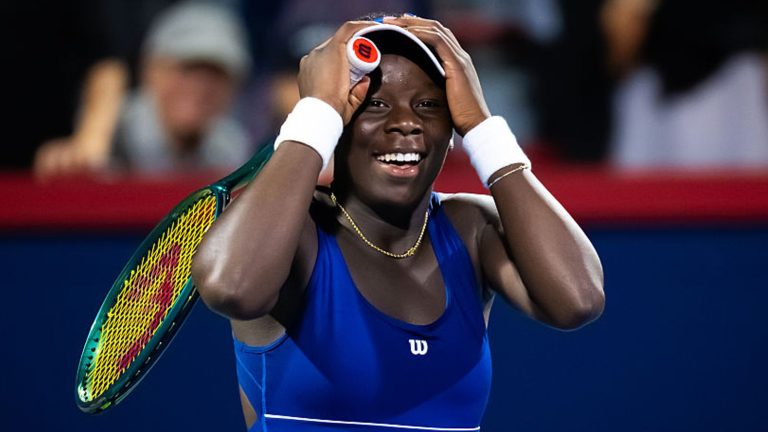
For Adi Shankar, the possibility to create an animated sequence primarily based on Capcom’s Satan Could Cry online game sequence was an incredible alternative. As an excellent fan of the property himself, he wasted no time in writing the scripts and growing the sequence… even earlier than Netflix signed on to create it. Now, with one season already completed, and a second within the works, Shankar is working to construct up a brand new universe primarily based on considered one of his favourite properties.
Netflix’s Satan Could Cry follows Dante (Johnny Yong Bosch), a younger demon hunter who seems to be the world’s finest hope for salvation when a mysterious villain threatens to open the gates of Hell. Shankar says his focus in creating the sequence was to not remake or rehash the unique story from the sequence, however to create a “new continuity” that also pays tribute to the essence of what made the video games so particular.

Netflix
DEADLINE: How did you get began with turning Satan Could Cry right into a tv sequence?
ADI SHANKAR: I had a beautiful assembly with Capcom. I’m an enormous fan of their stuff – I imply, who isn’t, proper? I grew up in Southeast Asia, so this was very a lot culturally in my DNA. So, we had this assembly with Capcom, and we’re speaking about totally different IPs I can adapt, and after we talked about Satan Could Cry, I used to be pumped. I received the rights from them, went off and developed the whole thing of season one, all eight episodes. After which, I simply form of known as up Netflix and stated I’m able to make this. They have been like, nice, let’s put it into improvement, however I stated, “No, no, no. It’s already been developed. Listed below are the scripts and right here’s a soundtrack checklist.” And so they’re like, whoa, this isn’t how this works. However they learn every little thing they usually have been blown away by it.
I believe good storytelling is a technique of excavation. You need to simply maintain excavating and discovering extra fact, and extra nuance and add extra layers to the piece. So, I got here to them with a package deal of the rights, the whole thing of season one, written and totally fleshed out with a soundtrack checklist.

Netflix
DEADLINE: You say you’re an enormous fan of Capcom, how huge of a fan are you of Satan Could Cry particularly?
SHANKAR: Huge. I can nerd out about it for a very long time, however I’m like a deep lower DMC fan. The fan base is, in case you’re a fan of Satan Could Cry, it’s a bit loopy. You get actually reactive. When DMC 4 got here out, and there’s a brand new character named Nero who was launched, I used to be actually offended. I used to be like, ‘Why are they changing Dante with Nero?’ And when the reboot got here out, I used to be actually upset.
DEADLINE: I’m an enormous Capcom fan too, however the Satan Could Cry recreation sequence is form of a blind spot for me. If you have been making the Netflix sequence, was there an impulse to comply with the storylines you grew up with, or did you need to provide you with a brand new story that also captured the identical tone?
SHANKAR: I approached this as a brand new continuity. So, it’s not a remake, it’s not a rehash, however in some methods it’s nearer to a retelling. And that’s the factor I do throughout all my stuff. When you watch even the quick movies on YouTube, it’s all the time like there’s the IP after which there’s the Adi Shankar spin on the IP. I needed my present to really feel like Satan Could Cry, to take the spirit of DMC, however I considered it as like Marvel’s Final Universe, and even X-Males the animated sequence, like reinterpretations that protect the emotional core whereas restructuring the mythology to go well with a brand new medium. Basically the inspiration stays, however the scaffolding has been rebuilt to assist lengthy type storytelling in a serialized, animated format for streaming tv.
It’s a brand new universe, however it’s one constructed from a whole obsessive understanding of canon, proper? Each the general public dealing with story and the deeper inside mythology that’s solely identified to Capcom, since you get entry to all of that and simply form of take up it much more. And also you change into much more of an excellent fan since you’ve gotten to peek backstage. So, then my job as creator-showrunner is franchise architect for the DMC universe on Netflix. It’s to primarily take the total spectrum of data and construct one thing that respects the previous whereas unlocking new narrative prospects.
DEADLINE: As somebody who was a fan because the starting of Satan Could Cry, what have been a few of these foundational parts that you simply wanted to incorporate?
SHANKAR: Properly, there’s two methods I can reply this query. One is, that is as a lot a love letter to Satan Could Cry as it’s a love letter to Capcom. Once I say it’s a love letter to Capcom, you’ve received this idea of Makai (the underworld) in my present, proper? Makai exists in Satan Could Cry, however Makai can be a connective thread throughout quite a lot of Capcom properties. You see it in Darkstalkers, Ghost ’n Goblins, you see it spiritually echoed in Onimusha… and in case you zoom out even additional, Makai is rooted in conventional Japanese mythology. It’s like a realm of chaos, inversion, suppressed threats, and so forth and so forth.
So, it was balancing this bigger love letter to Capcom with this visceral, over-the-top, trendy motion that’s the Satan Could Cry model on the finish of the day, after which taking some extra parts as effectively. As an illustration, music is an enormous a part of the video games, so music needs to be an enormous a part of my present, however I’m simply going to do it otherwise. It’s going to be my spin on the music, however the music will nonetheless be an enormous a part of the present. So, it was actually deconstructing the DNA of the model, and the DNA of Capcom, after which cross-pollinating all these parts and reverse engineering them into this Hollywood blockbuster. However then, subverting expectations by making you deeply care about this antagonist as a result of, on the finish of the day, Season 1 is an exploration of how we’re all simply kids making an attempt to reclaim what we misplaced as children.




